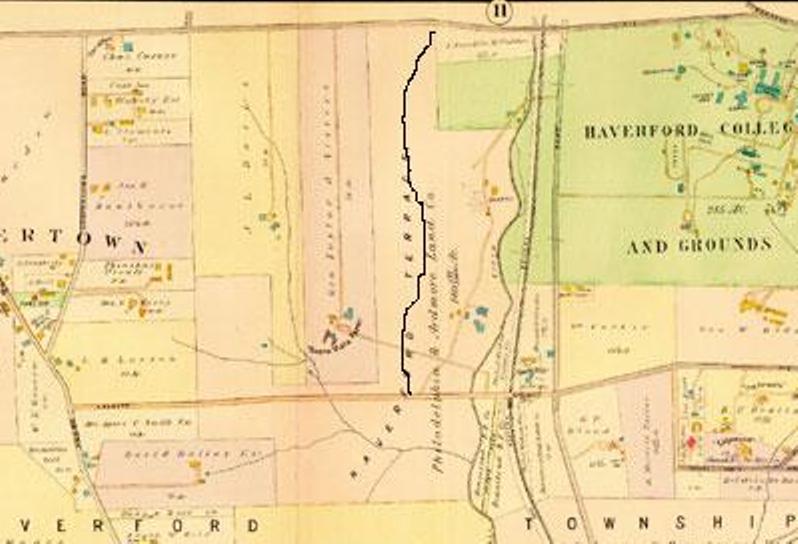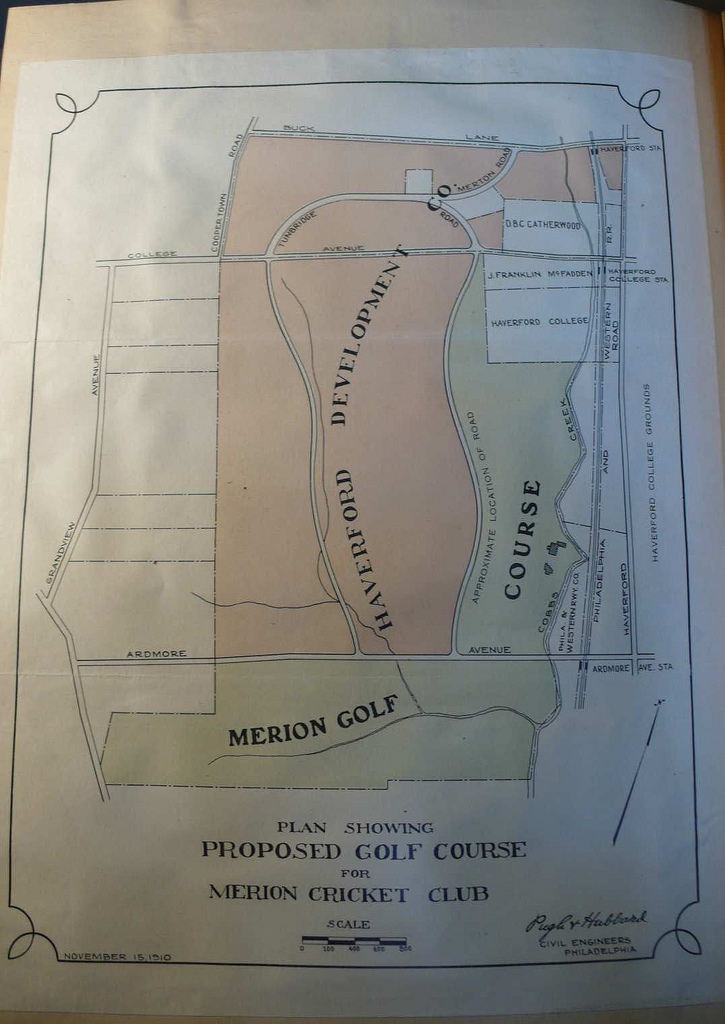David,
My mistake, and I see what you are saying. Thank you for bearing with my misunderstanding.
With your explanation, I can see that they first "optioned" 200 acres of the 400+ and then spent the next five months determining the routing and planning the holes before committing to the specific boundaries of the final purchase. That makes sense to me.
Where I'm still struggling however, is how this is in the least bit analogous to what was done at Merion?
For instance, we now know that when Macdonald "optioned" the 200 acres he did so with the idea that some large portion of it would be used for subscriber real estate lots.
In other words, in December 1906 he committed to buy considerably more land than he thought he needed for the golf course, which at first he figured would be about 110 acres, leaving another 100 for real estate.
We know he eventually used quite a bit more land than he originally estimated for golf as the planameter results from what you and Jim Kennedy figured indicate the golf course occupies somewhere between 150-180 acres of the 205 Macdonald eventually purchased.
That probably makes sense, as some of the width and strategic options we know Macadonald wanted to achieve required quite a bit of acreage, and even though the course is only "two-wide" out and back in terms of routing, most of the fairways occupy generous portions.
I'm also wondering if some other complications around the real estate plans made that a less enticing scenario as the course was several years in the making. Do you know why he eventually scrapped real estate plans? Did they just eventually determine that they didn't have enough lots left after desiging the golf course or were there other factors?
It would also seem from the articles that perhaps more credit for the routing and hole designs should go to Emmet and Travis than previously believed? Do we know if they were both involved as planned through the orginally proposed 5 month onsite design cycle, which seemingly culminated in the final purchase of 205 acres sometime later in 1911?
The reason I say I don't see any analogy to Merion is pretty straightforward.
In the case of NGLA, you've been telling me, and I now clearly see that the NGLA design committee spent five months (or more if the actual purchase date of November 1907 is accurate), working probably daily on the ground, coming up with the routing and hole plans for the course at Southampton before finalizing their purchase.
At Merion, the location of the 117 acres originally allocated for the golf course there out of the 338 acres that HDC held seem to have already been determined based on much less time, effort, and specific architectural purpose. It also seems much more arbitrary.
For instance, from all indications that 117 acres Merion purchased was made up of taking all of the Johnson Farm land south of Ardmore Avenue, adding the southwestern adjoining Dallas Estate, and then grabbing most of the Johnson Farm land north of Ardmore Avenue that ran from Ardmore Ave to College Avenue north, with a transitory, proposed, "approximate" boundary between the golf course and the land available for real estate that was going to be adjustable depending on the final routing of the golf course.
All of the rest of the HDC holdings was west and due north of the golf course.
The following pre-course map and the 1910 Land Plan illustrate what I mean;


While we know that Barker did some type of one-day routing for the developer Connell, we also know that Macdonald and Whigham's single day visit that same month only resulted in a single-page letter largely expressing concerns as to whether the acreage was enough for a first-class course, as well as agronomic concerns with the inland clay-based soils.
There is no record of anyone, much less either M&W or Barker, doing anything else on the grounds between June 1910 and the final land purchase in the Nov/Dec 1910 timeframe.
If there was some parallel to NGLA prior to the finalized purchase, one would expect that records would exist of committees and teams of men streaming across the hundreds of HDC acres looking to locate a golf course would exist, and that those committees would seek out the best land of the 338 HDC acres for golf...not just some arbitrary geographicallly-based boundary.
Instead, it's only after the land was purchased at Merion, again in a very sensible fashion simply divding the portions for what made sense to support the combined goals of golf and real estate (as well as factoring in some realites about the golf course...the possibility of using the existing barn as a clubhouse, the wish to have the course located near the railroad, the possibilities of the quarry and creeks for hazards), that a committee was created to explore how best to use that land, spent months on the ground going through every conceivable golf plan, and then asking for M&W's best advice on which of those plans made the most sense and had the greatest golfing potential.
I really do think it's that simple.